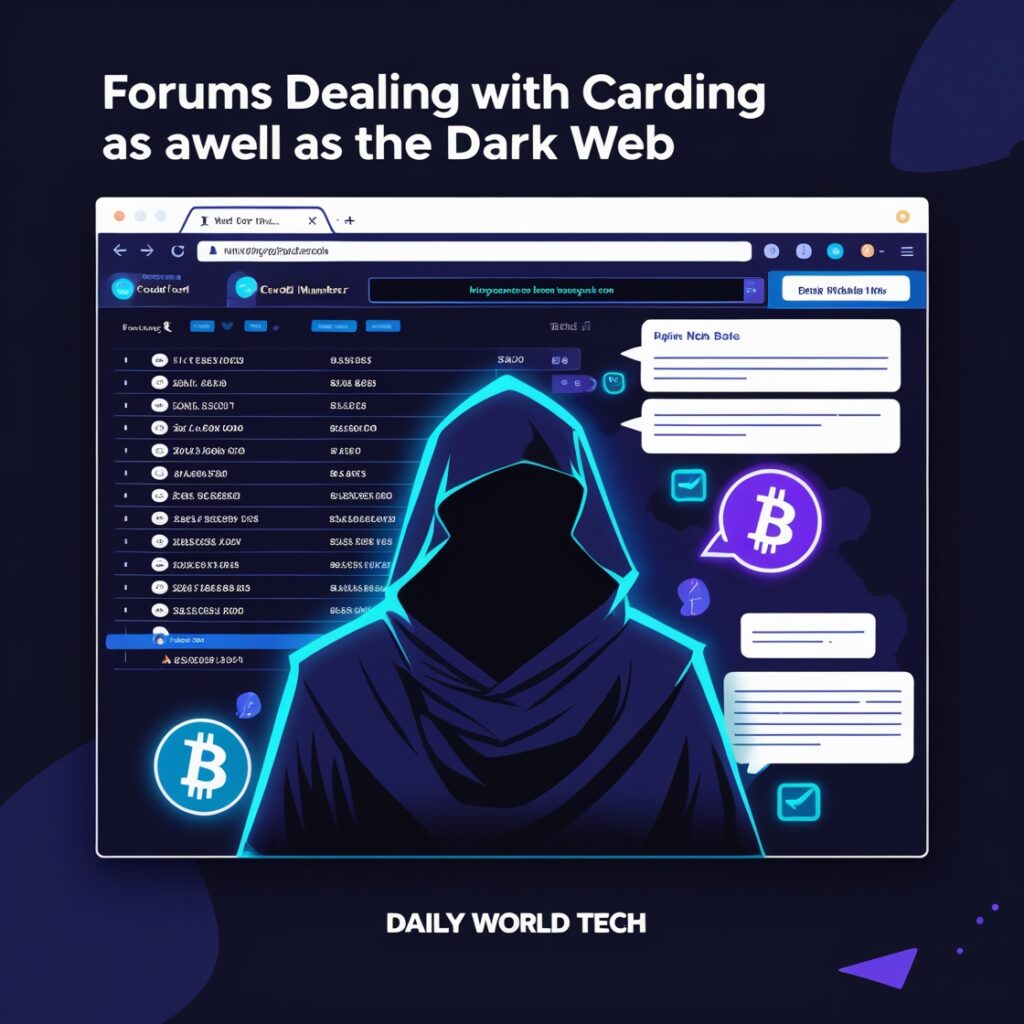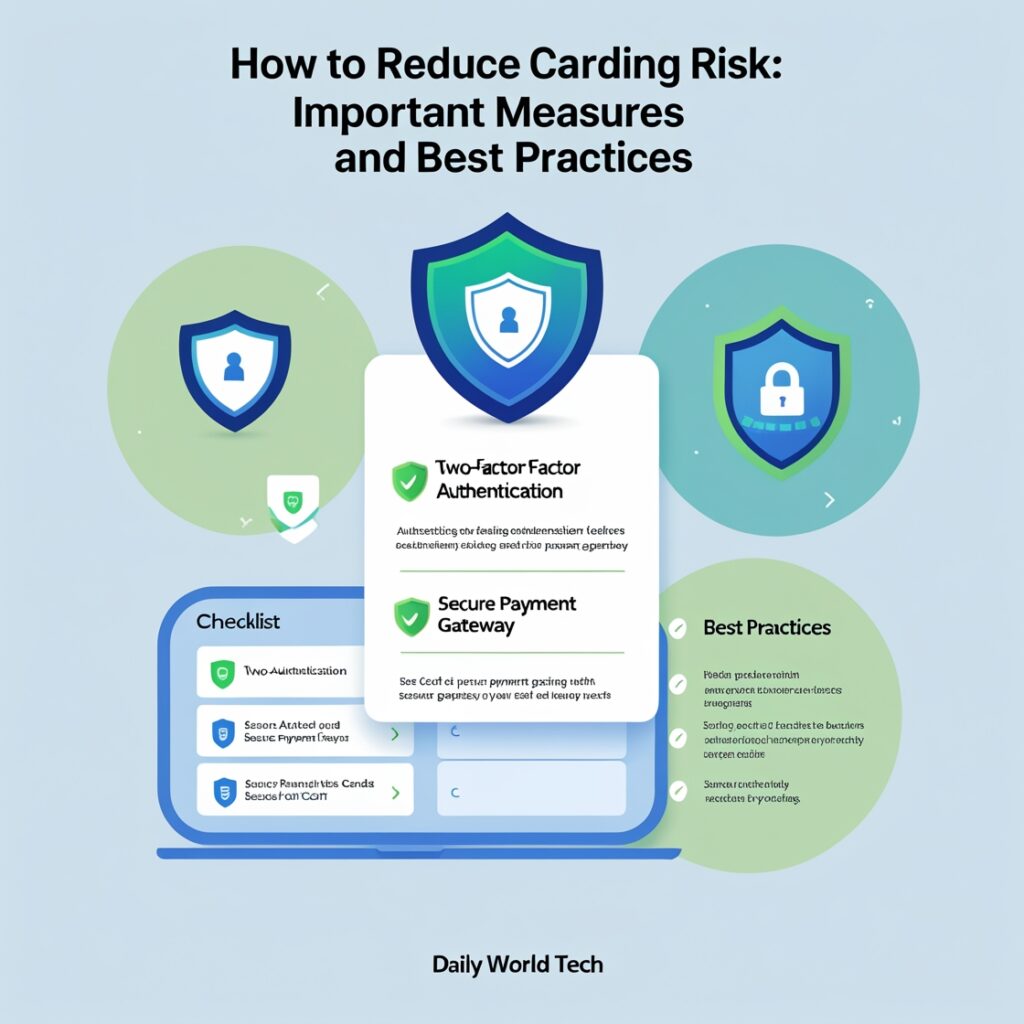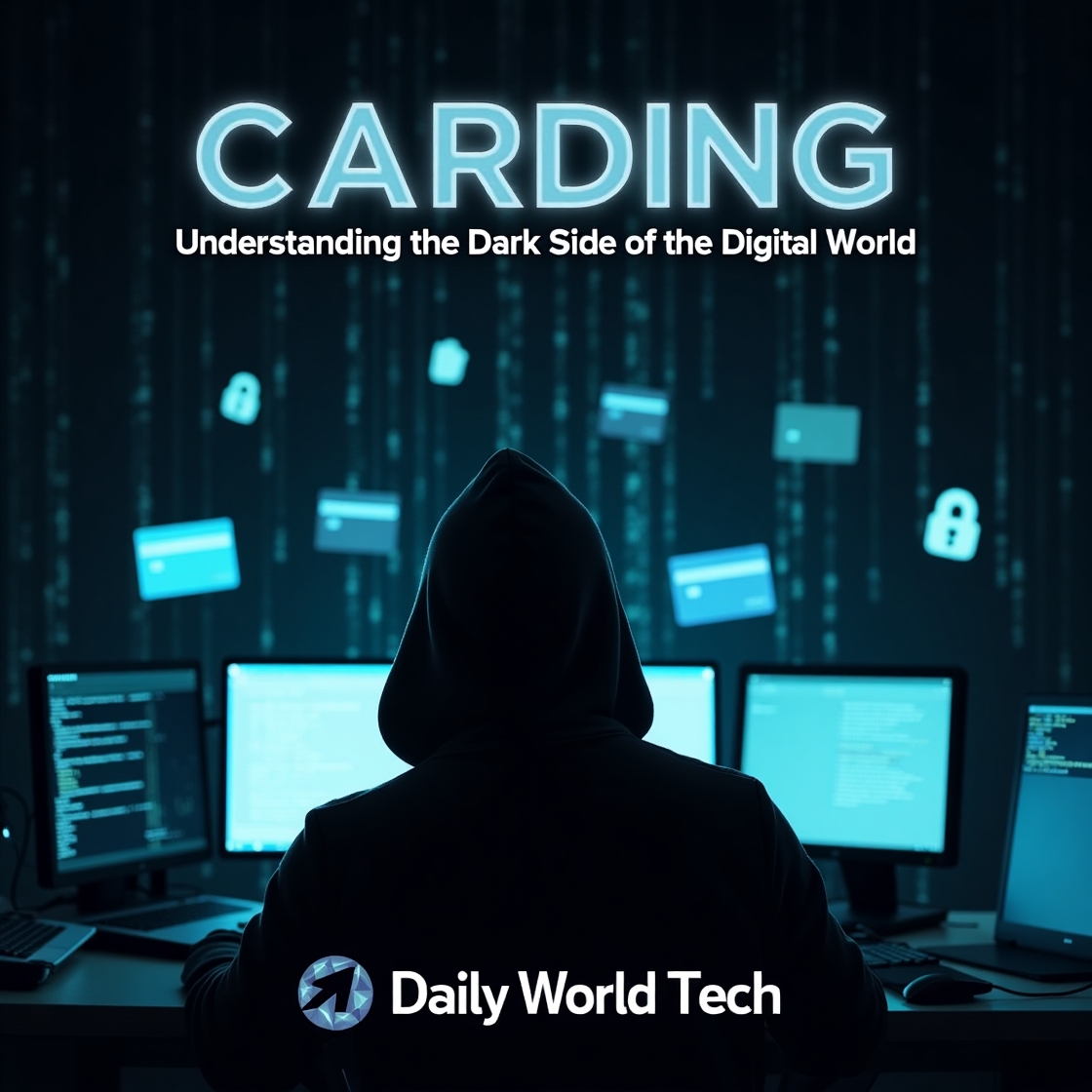Even though most internet users do not recognize the term, Carding is anything but invisible in the internet’s dark areas. Carding means using a stolen credit card to purchase things or to obtain money fraudulently online. It is very common now and makes up a shadow network of criminals, online shops and money laundering operations. Carding activities have grown in number thanks to the growth of e-commerce, digital payments and online worldwide connections.
What is Carding?
The technique of carding involves buying things using stolen credit or debit card information in unapproved transactions. The majority of these cards reach people after data breaches, phishing, through malware or through purchasing them from dark web sites.
With the help of such information, some cybercriminals purchase valuable products on the internet, resell them or use the money for money laundering. Carding thieves will often buy things with their fraudulent cards to make sure they can be used before moving up to pushing bigger purchases. One more step is setting up features such as proxy servers, making up fake accounts and using disguised identities.
How Carding Works
You must look into how criminals access credit card information to understand carding. Often, thieves use information from databases of retail websites, payment gateways or banks in the first stages of their schemes. Criminals online use tricks like SQL injection, malware and social engineering to take payment information.
Frequently, attackers use phishing by forcing victims to share their card numbers on imitation websites or through fake emails. Data is sold by fraudsters to each other in carding forums or darknet markets after picking it up.
Carders will use what they learn from the information to shop online. They often send the goods to drop addresses so they cannot be traced to them. To hide their true identity, criminals will use VPNs, botnets and fake accounts. Many times, scammers test small amounts to make sure the card is real. After the payment is processed, they choose to buy expensive goods such as electronics, jewellery or gift cards. After that, these goods can be sold through online ads or the black market, so the thief earns cash.

Carding as a Method to Convert Black Money to White Money
Stealing credit card information to buy products fraudulently is only one aspect of carding. They may also use these markets to get rid of black money by making it look like they are earning income legally. Converting this money is key in money laundering and is half the job, carried out in different stages using technology, invented names and e-commerce.
Step 1: Purchase the Necessary Card Data
The initial phase needs you to get credit card data from online criminals using the dark web. The carder may pay for the numbers with their black money or receive them after stealing them with hacking or phishing. These details about the card form the basis for scammers to launder money.
Step 2: Buying Products on the Internet
With what they stole from the credit cards, criminals make Internet purchases of expensive items including smartphones, laptops, clothing, gift cards or crypto. The person buying using another’s card is still safe because their own black money is not being used. The goal is for someone to obtain stuff or digital assets that leave no trace of their money transaction.
Step 3: Sell the Items After Buying
Those goods are then sold by the thief on eBay, on marketplaces like Craigslist or in Telegram groups. In most cases, the criminal is given money they can use without fear which often comes through a bank transaction, mobile payment or sometimes cash. Even though the original buy was unlawful, it looks like the money came from a legal transaction.
Step 4: Labeling the Income as a Legal Asset
A criminal might report the money as paid to them for business, freelance or online selling activities. Small shop and e-commerce owners can show these transactions as sales they complete regularly. This lets them report the money, pay taxes on it and make sure it’s counted as genuine income. It is very challenging to determine where these funds first came from.
Step 5: Involving Shell Companies and Fake Invoices
Certain carders establish bogus firms to issue bills for commodities or activities that did not occur. Carding profits are given the labels of invoices or the sales are tagged to profits from carding. When criminals issue the invoices, they can clean their money by themselves. It is most often seen with cybercrime groups that operate across nations.
Step 6: Engaging in Other Forms of Income
Once money is laundered, carders often combine it with money made for legal purposes. As an example, people running a restaurant, shop or online store can direct the white money from carding to their business accounts. In the long run such money looks like real income which gives them freedom to spend it on investments, luxury goods or property.
Carding as a Part of the Criminal Underground
Carding belongs to a larger online crime network. The ecosystem features several individuals who all have a role to play. Hackers get hold of credit card information and sell it on different dark web forums to vendors. Then, these vendors make the data available to carders.
A number of forums are dedicated to trading BIN checkers, CVV generators, fake ID templates and software to spoof personal information. Anyone new to metalwork can find useful videos and guides online. It operates the same as legal online businesses, providing customer feedback, solutions for disputes and guarantees for products.
Carding also includes the important element of money laundering. The stolen money needs to be sent through the financial system and is made clean this way. Ways include using only prepaid debit cards, using crypto tokens or inventing a business to justify the income they claim. It is not rare for scammers to ask people to help them by withdrawing or sending money. Because these activities interact in complex ways, cybercrime is now very structured and advanced.

Forums Dealing with Carding as well as the Dark Web
Carding activities depend heavily on the dark web. Many cybercriminals meet on these platforms to exchange stolen card data, talk about methods and cooperate. Such sites are typically reached by using browsers that preserve anonymity such as Tor. They rely on using cryptocurrency to hide what they do and avoid catching attention.
For some forums, only members invited by the group or those willing to pay a fee are admitted. Their communities are known to operate in private and regularly adjust to not be detected or closed by the authorities.
On these forums, there are thousands of credit card details from various countries which are often sorted by bank, the country and what kind of card it is. There are vendors selling recent data dumps and if a card is not working, they will offer a replacement. In addition, people can get carders-as-a-service, where experts carry out the fraud for a charge. Because of all this commercialization, carding is now not just casual theft but an organized and big criminal operation.
Carding and the Effects on Laws and Finances
The economic impact of carding can be huge. Many cybersecurity organizations regularly report that billions of dollars are lost around the world annually through payment fraud. Businesses deal with money losses, harm to their reputation, legal responsibilities and higher costs for increased security.
Financial institutions are required to give refunds for improper transactions, look into claims of fraud and spend a lot on detecting fraud. Experiencing carding leads to stress and disrupts someone’s finances. Most banks offer protection from fraud, though dealing with fraud issues can often take much time and effort.
Compared to regular carding, identity theft that often goes with it can result in significant problems that last years and involve laws. Laws to stop carding have been put in place by governments everywhere, but enforcing those laws is considered difficult due to the complexity of investigating and the anonymity of the crime.

How to Reduce Carding Risk: Important Measures and Best Practices
Carding can only be prevented with a joint effort from people, businesses and those in law enforcement. The best thing consumers can do is make sure they surf the web securely. Some of the things you should do include not opening dangerous links, ensuring you don’t give your card details to suspicious websites and turning on two-factor authentication for your bank accounts.
It’s a good idea to go over your bank statements from time to time and set up alerts for anything out of the ordinary. Companies need to choose reliable ways to accept payments and monitor their security often. Following PCI-DSS (Payment Card Industry Data Security Standard) is absolutely necessary.
In addition, using tokenization, encryption and AI technology helps catch more fraud. Checking Address Verification Systems and Card Verification Value on transactions is important for online merchants to avoid fraud.
International carding requires law enforcement agencies around the world to join forces. Digital fraud investigators need proper training and equipment to do their job well. Raising public awareness can teach people what to watch out for and what the risks are. Building a safer digital environment is something everyone has to do together.
What the Next Decade of Carding and Cybersecurity Looks Like
A change in technology brings new techniques for cyber-attacks. It is expected that carding will get more complex in the future. Because machine learning is used by both sides, the struggle between attackers and defenders can get more intense.
Contactless payments, digital wallets and cryptocurrencies now create new chances for criminals to commit fraud and new risks for people. Both biometric authentication and blockchain-based options could provide greater security, but they can’t completely stop exploitation.
Fraudsters are now making fake identities by mixing real and made-up information for personal gain. Instances of synthetic identity fraud are usually not picked up by regular fraud detection systems.
Deep web marketplaces are improving their ability to stay up by switching to decentralized sites and using encrypted messaging. As a consequence, fighting carding requires effective technology as well as smarter policies and efforts from nations worldwide.
❓ Carding: Frequently Asked Questions
1. What is Carding?
Carding is the illegal use of stolen credit or debit card information to make purchases or withdraw money online. It is a form of cybercrime often associated with the dark web and digital money laundering.
2. How do criminals get credit card information?
Cybercriminals use methods like phishing, data breaches, malware, social engineering, and dark web purchases to steal or buy credit card details.
3. Is carding the same as identity theft?
No. While carding involves using stolen card data, identity theft involves stealing someone’s full personal identity (name, address, ID numbers, etc.) and using it for various types of fraud, including carding.
4. Why is carding hard to trace?
Carders often use VPNs, fake identities, drop addresses, and cryptocurrencies to hide their identity and avoid being tracked by authorities.
5. What is a drop address in carding?
A drop address is a fake or untraceable shipping address where fraudulently purchased items are delivered so the real criminal cannot be identified.
6. Can people make money through carding?
Yes, criminals often resell stolen goods, convert them into cash, or launder black money through online businesses, but it’s illegal and carries heavy penalties.
7. How do carders launder money?
They launder money by buying goods with stolen cards, selling those goods, and disguising the income as legitimate through fake businesses, shell companies, or online platforms.
8. How can I protect myself from carding?
- Never share card details with unknown sources
- Enable two-factor authentication
- Monitor bank statements regularly
- Use secure and trusted websites for transactions
9. What should I do if my card is used fraudulently?
Immediately contact your bank or card issuer, report the fraud, block the card, and file a police complaint if necessary.
10. Is carding punishable by law?
Yes, carding is a serious cybercrime punishable under cyber laws in most countries. Penalties include heavy fines and imprisonment.
Conclusion
Carding is an advanced type of cybercrime that can seriously harm people, companies and the worldwide financial system. It isn’t only about credit card theft; there is also a whole network built around stealing money and deceiving others.
Knowing how carding happens, identifying its effects and acting early are important ways to fight online crime. Today, because the world is so closely linked, it is the task of everyone, from consumers to corporations and regulators, to ensure personal and financial data is secure.
Cybercrime, including carding, can be stopped only when many work together. Carding is an important step in committing digital money laundering. They make this happen by using stolen credit cards and doing deals through the web and fake businesses. Digital systems are so complex and often unknown that it is hard for law enforcement to discover who the original sender is.
Because of this, we need stricter government rules, more financial checks and effective action to stop black money from becoming whitewashed through digital crimes. Read more information about Carding.











